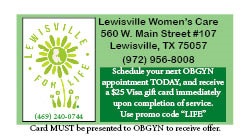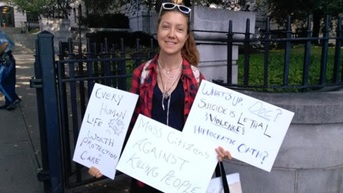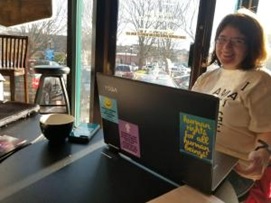
by Rosalyn Mitchell
During my internship with the Consistent Life Network, I devised and successfully implemented the “Wikipedia Method.” The goal of this project was to identify organizations that refer to the 80 Planned Parenthood Centers known to have health-code violations as determined by official state inspections. These were selected because information on health violations may make referrers more likely to hesitate about referring to those specific centers. This includes referrals for health services, as opposed to abortions, such as Well Women Exams and STD/HIV testing.
While I have covered the 80 centers, there are about 500 more PP centers. The best way to find referrers with this method is for local activists to use it just for the few PP centers in their own locale.
Using Wikipedia, a free online source, one can find information on possible referrers under specific geographic locations.
Target Referrers
Given Planned Parenthood’s marketing appeal to “affordable women’s healthcare,” students are a primary demographic: teenagers and young adults in high school and higher education. This method therefore focuses primarily on educational institutions, including both public and private schools, specifically school districts that manage a cluster of schools. School districts are sometimes headquartered outside of the target geographic region but run schools within the targeted area.
We also focused upon government services, primarily local health departments typically associated with broader municipal management of cities and towns.
While we didn’t focus on health insurance companies and internet directories, we recommend focusing upon them for future projects.
How To
The method of this research is the internet, through Wikipedia, as developed over months of trial and error. Due to the novelty and the broad nature of this project, we decided to focus on web searches. We previously experimented with phone calls and emails as follow-up contact, but found it time-consuming with few responses.
Once you locate a Planned Parenthood center in your area, search the affiliated Wikipedia page by googling the city or town. Usually, the targeted referrers are listed via the “education” or “schools” section.
Check the address of the schools within the school district. For higher education, this method includes colleges both public and private, including community colleges.
Check which county your city or town is run by for health as they sometimes are managed by the regional government.
Beware of geographic inaccuracies in the Wikipedia entry and keep a separate document for “Mistaken Geography” to record any referrers beyond the targeted geographic location.
If you come across federal or international referrals, document them separately. There may be a link to a more comprehensive list via another entry.
Document your results using Microsoft Word or a Google document that’s easy to share. Once opened, copy and paste the clinic address at the top of the page and make two subtitles. The first is for local referrers geographically located in the same place as the target Planned Parenthood center. The second is for regional referees with branches located in the geographic region where the Planned Parenthood centers are. I used the marking of * to link regional referrers with local centers as parent institutions.
Sometimes you may have to use Google to search an institution. Once on their homepage search, “planned parenthood,” the quotations narrow the search, filtering unrelated content. Each report should list all referrals to Planned Parenthood as clear evidence. Copy and paste each link record the website and contact information. Under the “referral portion,” write the search terms and a short description of each reference, as described on their website.
Organizations may refer via external resources created to promote Planned Parenthood. Note this in the report under “External Organizations,” linking to the source’s name, website and document. Not all referrers use external references.

Below is an example of one of my reports. It’s for Austin, TX.
Planned Parenthood – Fort Worth
6464 John Ryan Dr, Fort Worth, TX 76132
Local
Fort Worth Independent School District
Website
https://www.fwisd.org
Contact Info
100 N. University Dr. Fort Worth, TX 76107
Phone 817 814 2000
Referral
Searched on website “Planned Parenthood.”
https://www.fwisd.org/site/Default.aspx?PageType=6&SiteID=4&SearchString=planned%20parenthood
#1
Referred through “Reproductive Health Service Providers” to Planned Parenthood Southeast Fort Worth Health Center address, hours of operation and phone number for reproductive healthcare. Unable access to direct due to denied access linked to search.
#2
https://www.fwisd.org/cms/lib/TX01918778/Centricity/Domain/1006/2016-2017AdoptedProcceduresForReferringStudents.pdf
Referred under “2016-2017 Adopted Procedures for Referring Students to the School” through “Reproductive Health Service Providers” to multiple Planned Parenthood including Southwest Fort Worth Health Center address, hours of operation and phone number for student healthcare.
https://www.fwisd.org/site/Default.aspx?PageType=6&SiteID=4&SearchString=planned%20parenthood
*University of Texas Arlington Fort Worth Campus
Website
https: // fortworth.uta.edu/
Contact Info
1401 S Jones St, Fort Worth, TX 76102, United States
Phone 817-272-5988
Regional
*University of Texas Arlington
Website
https://www.uta.edu/
Contact Info
701 S. Nedderman Drive Arlington, TX 76019
Phone 817 272 2011
Referral
Searched on website “planned parenthood.”
#1
https://www.uta.edu/womens-studies/opportunities.php
Referred under “Women and Gender Studies Department” through “Opportunities” to Planned Parenthood for student internships.
Advice for Activists
Finally, I want to advise local activists about traps to avoid.
Beware of guilt by association. Just because an organization involves itself with Planned Parenthood referrers doesn’t mean they refer themselves. Only list them in the report if there is clear evidence that they refer independently. This includes health departments, as their associated branches may refer while they don’t.
Politics influences geography, with liberal areas being open on average to referring to Planned Parenthood, while conservatives are more hostile. Another aspect is the population, with urban areas on average having more referrals than rural locations. Sometimes you do not find anything; don’t be disheartened, but persevere onwards.
While most websites have search options, some don’t. Save time by being strategic in which tabs you check.
Check health and wellness, resources, student services, internships, educational partnerships, curriculum, equity departments etc.
Beware of defunct organization with signs including websites linking on the internet archive, “Wayback Machine.”
Any religious organization, be it Muslim, Christian, or Jewish, is best avoided as it yields a low rate of return.
Ensure that the referrals are recent. Ignore referrals from over five years ago, as the aim is to stop present referrals.
Finally, age matters, as Planned Parenthood services target post-pubescent bodies making K-8 school unlikely referrers. This work must be exacting in detail to best yield results.
I want to end with encouragement: Change starts with a few dedicated activists like you.
==============================================
This blog of the Grassroots Defunding: Finding Alternatives to Planned Parenthood campaign is for activists to share their stories, so we can learn what’s worked well, what hasn’t worked well, what lessons have been learned, and get more ideas for local actions.
See the List of Blog Posts.
If you’d like to share a post, please submit it to grassrootsdefunding@consistent-life.org. Attaching pictures is helpful.
This is a project of the Consistent Life Network. As with our own blog, opinions expressed are those of the writer; we encourage a diversity of views.


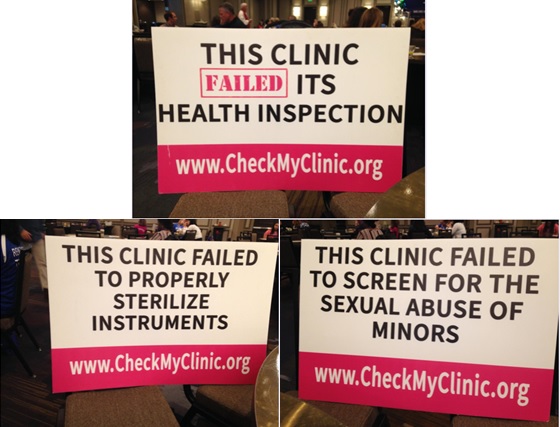
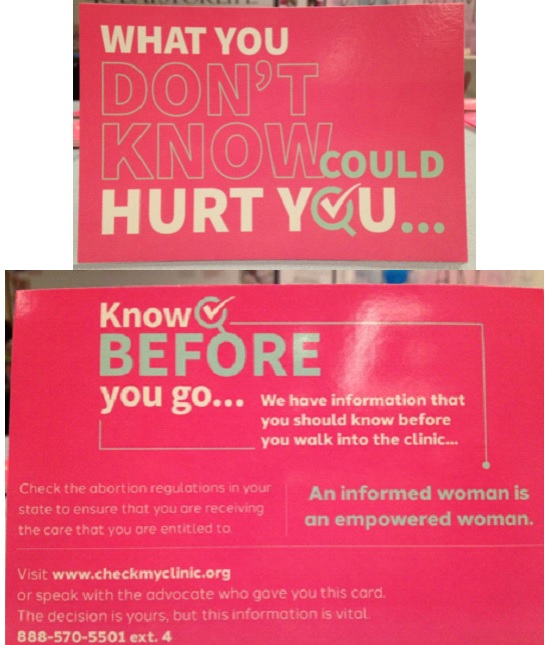




 Quickly Documenting What PP Offers
Quickly Documenting What PP Offers
 If I were pregnant, scared, and had little money, where (besides Planned Parenthood) could I go in this city for help?
If I were pregnant, scared, and had little money, where (besides Planned Parenthood) could I go in this city for help? We would create a business card offering FREE OBGYN services (excluding birth control) for one office visit at the OBGYN’s office. Our non-profit would be sent the invoice for the visit and the costs would be paid by us.
We would create a business card offering FREE OBGYN services (excluding birth control) for one office visit at the OBGYN’s office. Our non-profit would be sent the invoice for the visit and the costs would be paid by us.